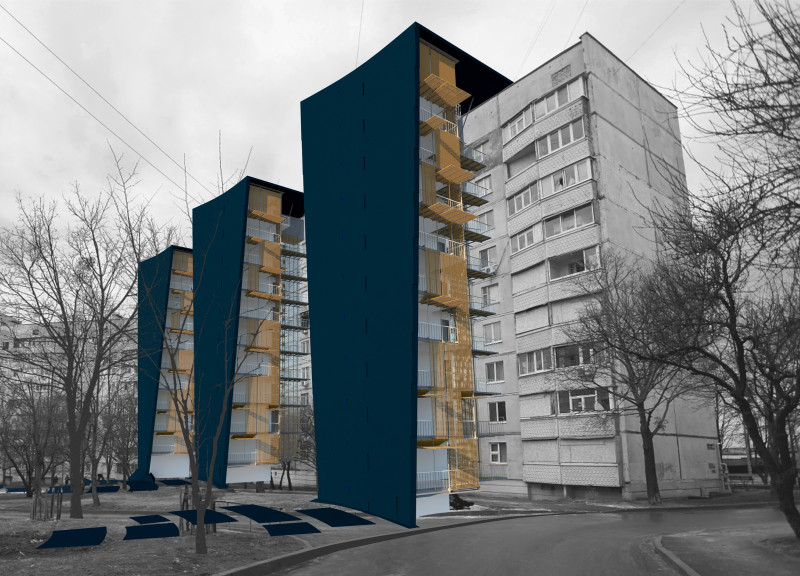5 key facts about this project
Upon entering the building, one is immediately struck by the openness of the layout, which facilitates fluid movement and interaction among users. The design prioritizes accessibility, with wide corridors and strategically placed entrances that invite people to flow naturally through the space. Large windows are a defining feature, allowing for abundant natural light to flood the interiors, thereby reducing the reliance on artificial lighting and creating an inviting atmosphere. This connection to the outside is further enhanced by carefully curated views that frame the landscape, creating a dialogue between the building and its surroundings.
The architectural plans demonstrate a keen attention to the functional aspects of the project. Each area within the building is designed with specific uses in mind, ensuring that the layout supports effective workflow and social interaction. Common spaces, such as lounges and meeting rooms, are situated in central locations, promoting collaboration and engagement among users. The integration of flexible room designs also allows for adaptability, catering to varying group sizes and activities, which is essential in fostering a dynamic environment.
Materiality plays a significant role in the overall expression of the project. The choice of materials reflects not only aesthetic preferences but also a commitment to sustainability. Natural materials, such as wood and stone, have been employed to create a warm and inviting ambiance. These materials not only enhance the tactile quality of the interiors but also contribute to the ecological footprint of the building, aligning with contemporary sustainability practices. The use of high-performance glass further exemplifies the project’s commitment to energy efficiency, providing thermal insulation while maintaining transparency.
The design approach showcases an innovative blend of contemporary and traditional elements. By respecting the local architectural context, the project balances modernity with a sense of place. The roofline features subtle slopes and overhangs that echo the adjacent structures, while the façade incorporates patterns and textures reminiscent of local building techniques. This thoughtful integration means that while the building is a product of modern architectural practices, it resonates with the historical and cultural narrative of the area.
Unique design aspects include the incorporation of green roofs and landscaping that not only enhance biodiversity but also contribute to urban cooling and air quality improvement. These elements reflect a growing awareness among architects of the need to create buildings that contribute positively to their environments. The rooftop gardens serve as communal spaces for users, providing an escape from the urban landscape and promoting well-being.
As one explores the details of the project, the use of color emerges as a notable feature. The palette is restrained yet thoughtfully applied, with earthy tones that promote a sense of calm and balance. Accent colors are used sparingly, serving to highlight specific architectural details or functional areas, enhancing the user experience without overwhelming the senses.
In summary, this architectural project exemplifies a finely tuned balance of aesthetics, function, and environmental consciousness. The careful consideration of layout, materiality, and design elements results in a building that is not only visually appealing but also deeply responsive to the needs of its users and the context in which it resides. For those interested in exploring this project further, a detailed examination of the architectural plans, sections, and overall design will provide a more comprehensive understanding of the thoughtful strategies employed throughout the design process. Engaging with these elements can yield insights into how contemporary architectural ideas resonate within the broader discourse of sustainable and inclusive design.


























